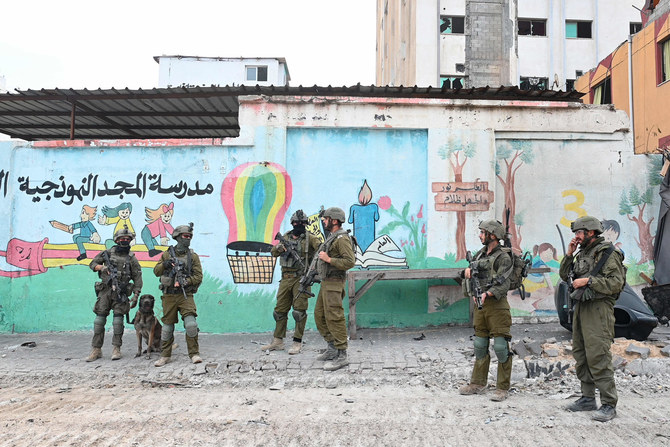
The best measure of the artist Ai Weiwei was made not by any critic but by an interrogator working for China’s state security forces. It came 51 days into his imprisonment in 2011 on trumped-up tax evasion charges. The agent “understood that I wasn’t an evil person”, Ai relates in his autobiography, “just a troublemaker”. “Everything I did was basically a form of dadaism,” the agent told him. “Cultural subversion was my speciality.”
The artist first became “a nail in the eye, a spike in the flesh, gravel in the shoe” of the Chinese Communist party when he orchestrated the gathering and publication of the names of 4,851 children who died in the 2008 Sichuan earthquake. Their deaths, Ai writes, were a direct consequence of corruption and the unsafe construction of school buildings.
Were Ai to have kept this politicking confined to the gallery, the state security services might not have been so determined in their persecution of him. Indeed, we hear little about the conceptual work that initially made his name: the 1,001 Chinese nationals, from all walks of life, who became a living artwork at the Documenta exhibition in Kassel in 2007 are afforded just a few paragraphs; his later installation of 100m ceramic sunflower seeds in the Turbine Hall of Tate Modern in 2010 even less. Art Ai regards as “a safe haven, a language that was less confrontational”. Instead, the artist has increasingly turned to documentary-making to highlight the government’s corruption and censorship, as well as embracing blogging and social media with bravado. Politics, he says, is a kind of “readymade” artwork.
The earthquake is not the only cause Ai has taken up. He has highlighted labour abuses in the construction of the 2008 Beijing Olympics stadium he helped design; sold a pack of baby formula at auction to call attention to its high levels of toxic melamine; and campaigned against the cat-meat trade. In 2009 the artist was beaten and his team locked in their hotel rooms after they travelled to Chengdu in China’s southwest to support a fellow activist on trial.
Ai clearly relishes the publicity these confrontations afford him and he makes no huge effort to ingratiate himself with the reader. In 1994 he produced The Black Cover Book, a compendium of artworks and texts distributed under the radar of the censors. Though it did catch the attention of the police, spooking his collaborators, Ai sounds disappointed when he reveals “they did not directly interfere”. After Chengdu he says he “was determined to see how far I could go”. His arrest followed shortly after, sparking international condemnation (in 2015, when the UK issued only a limited visa to allow him to visit his show at the Royal Academy in London due to his criminal record, home secretary Theresa May intervened to extend it).
Given that AI is not shy of controversy, there are some strange omissions. He does not address the criticism levelled at him after he recreated the photograph of Alan Kurdi, the three-year-old Syrian refugee pictured dead on a beach, with himself in the position of the drowned boy. Nor does he mention his support for Julian Assange. Early in the book, in a paragraph concerning self-criticism sessions in 1940s China, he writes how “ideological cleansing” continues in the modern west “under the influence of politically correct extremism” – but leaves the point hanging.
Ai’s rebellion has its roots in his father’s turbulent life. He writes that he was never emotionally close to Ai Qing, who was a famous poet. Yet it is evident that his father’s persecution, first under the Nationalists in the 30s and then as a “rightist” during the Cultural Revolution, had a profound effect on Ai’s character.
Ai Qing joined the Communist party in 1941 and was intimate with its leading lights, including Mao Zedong, whom he found “thoughtful and composed, and widely read … cracking the occasional joke”. Yet he soon fell foul of the leader’s purges. It is in the recollections of Weiwei’s teenage years in a region nicknamed “Little Siberia” that the autobiography is at its most vivid and revealing. Living in a dug-out pit, the boy foraged for firewood to keep warm, his father forced to clean latrines in which “faeces would freeze into icy pillars”.
“Father would always light a cigarette and size up the work as though admiring a Rodin sculpture. The nicotine rush would bolster his courage in addressing the task ahead,” he writes. Ai Qing suffered this persecution stoically, he notes: “I have to admit I lack that level of forbearance.” When Ai Qing was eventually politically rehabilitated, he professed himself at peace, but for his son those humiliations have cast a long shadow. He expresses an “impatience with the timidity of my father’s generation”.
Despite these mixed feelings, 1000 Years of Joy and Sorrow is ultimately an elegiac tribute to his father’s professional and personal legacy. He quotes from Ai Qing’s poems, reproducing several of them in full. One of his father’s earliest works, written in Paris, describes his fellow exiles “loving freedom, hating war / In a fury over these things / In anguish over them / Working up a sweat / Tears in their eyes”. Ai now lives in Portugal, and, for all his pragmatic understanding of art’s limits in the face of totalitarianism, rejecting his father’s belief that poetry was “inseparable from the future of democratic politics”, art nonetheless remains for him a signifier of social health. Censorship, Ai writes, “is the cruellest form of violence”.












